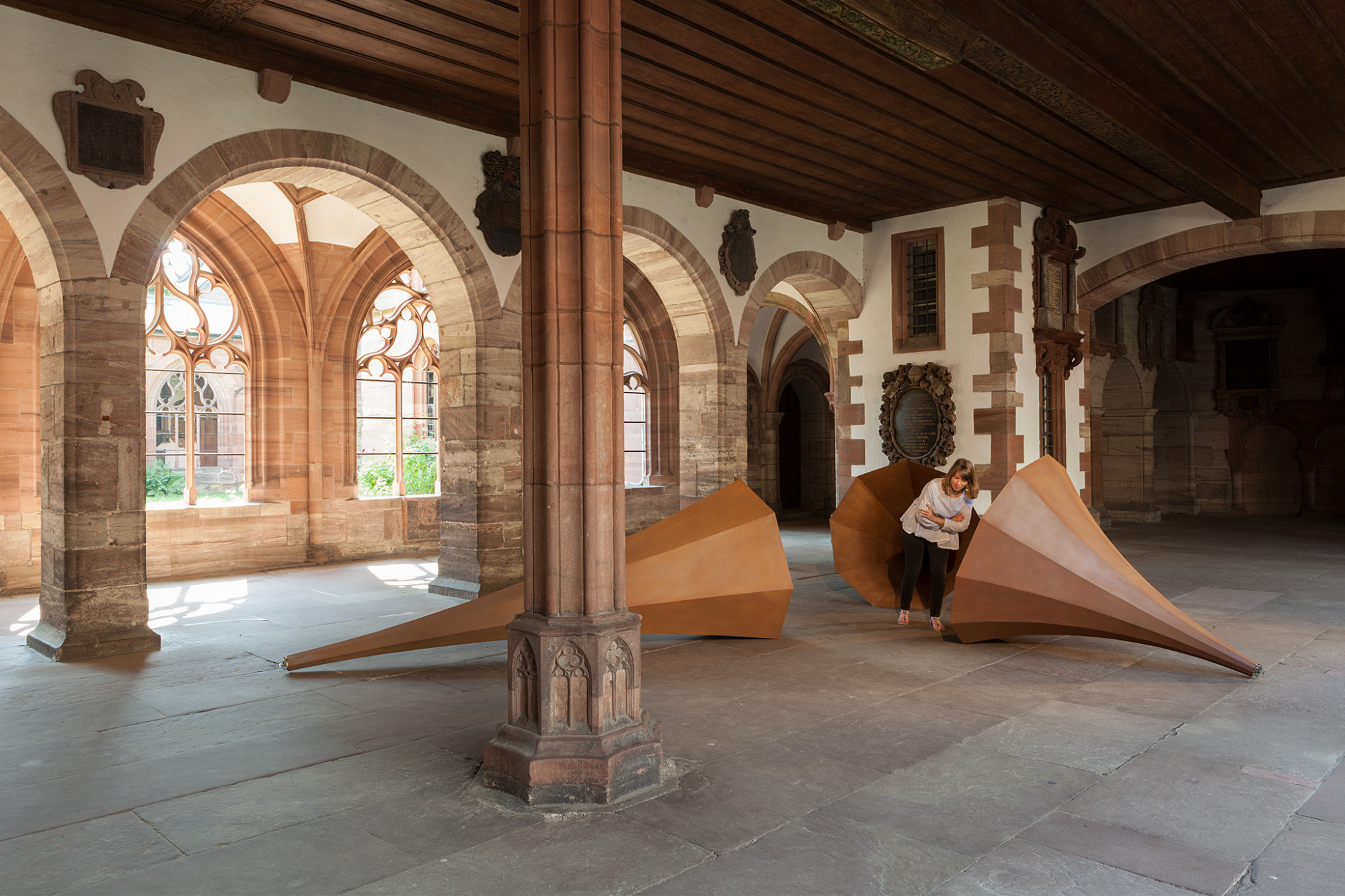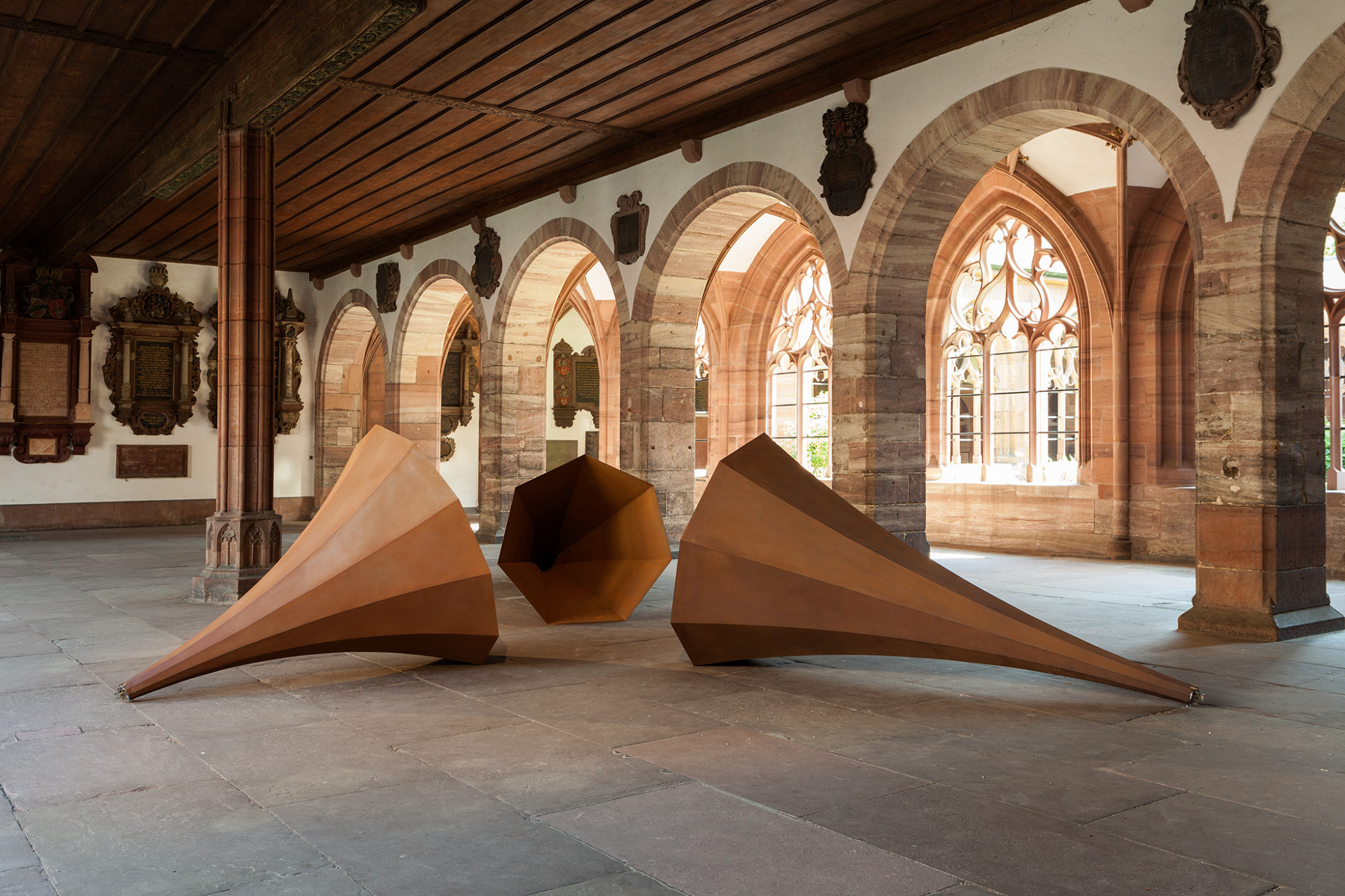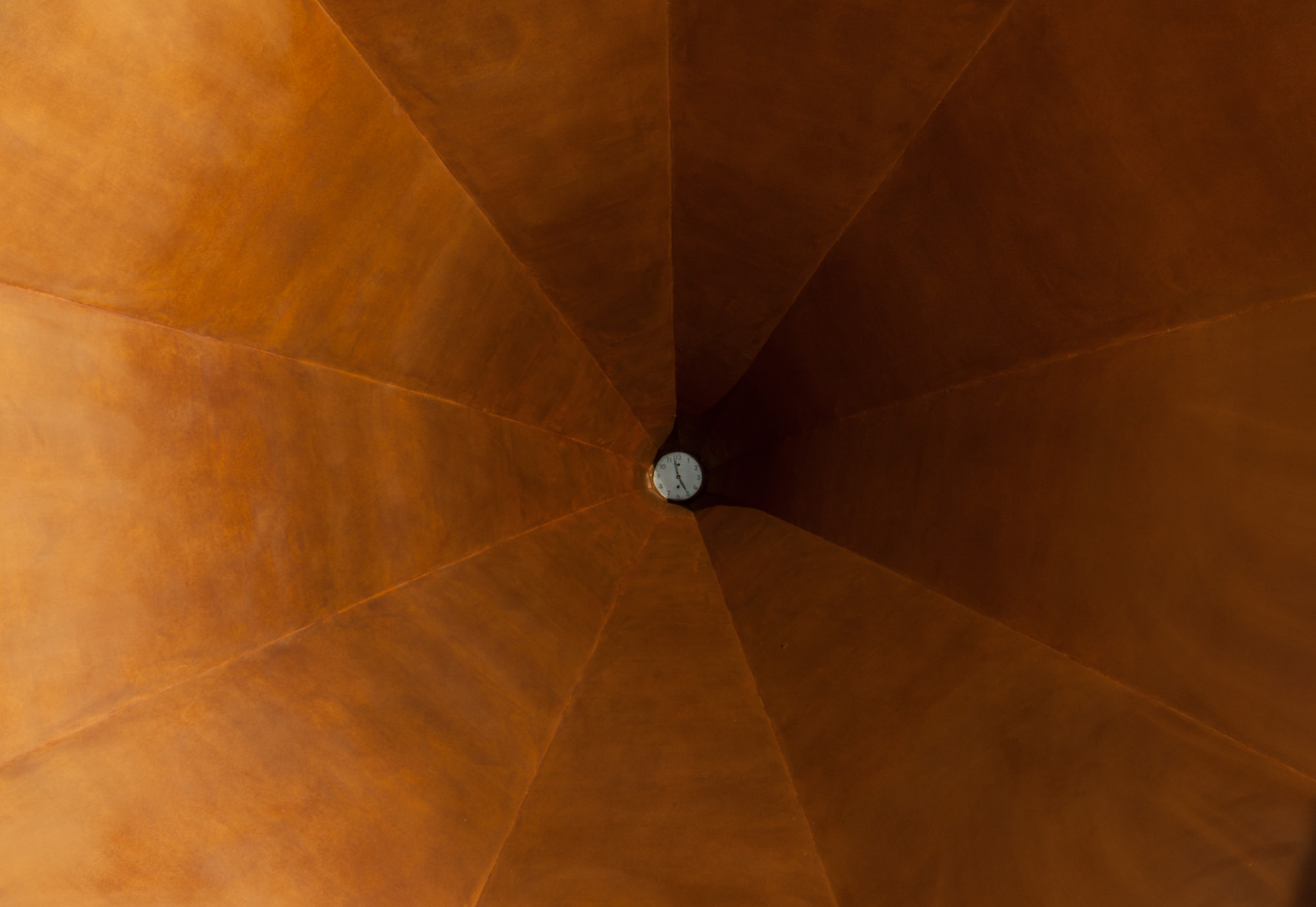
Der Tag ohne Gestern I-III, 2014-2015
corten steel, alarm clock, unique
Der Tag ohne Gestern: 145 x 300 x 145 cm
Der zweite Tag ohne Gestern: 133 x 350 x 133 cm
Der dritte Tag ohne Gestern: 157 x 174 x 157 cm

Der Tag ohne Gestern I-III, 2014-2015
corten steel, alarm clock, unique
Der Tag ohne Gestern: 145 x 300 x 145 cm
Der zweite Tag ohne Gestern: 133 x 350 x 133 cm
Der dritte Tag ohne Gestern: 157 x 174 x 157 cm

Der Tag ohne Gestern I-III, 2014-2015 (detail)
corten steel, alarm clock, unique
Der Tag ohne Gestern: 145 x 300 x 145 cm
Der zweite Tag ohne Gestern: 133 x 350 x 133 cm
Der dritte Tag ohne Gestern: 157 x 174 x 157 cm
Exhibited in the cloister of Basel’s gothic cathedral, Alicja Kwade’s Der Tag ohne Gestern (2015) explores the fundamental questions of space and time. The work consists of three large corten-steel structures, the forms of which are inspired by pre-scientific attempts to illustrate the inherent structure of the universe. Kwade’s sculptures also bring to mind the horn-shaped loudspeakers of early gramophones, a fact she exploits by utilizing their intrinsic ability to amplify sound. A clock is affixed to the base of each sculpture, its ticking seconds acoustically stretched and strengthened by the funnel-shaped tubes. The viewer can walk through the space, peer down the barrel of the sculptures and find a clock indicating the accurate time, demonstrating one of the fixed measures humans use to place ourselves in the universe. One of our most fundamental experiences – the constant passage of time – is in dialog with the sculptures themselves, whose forms are based on unprovable, intangible systems.